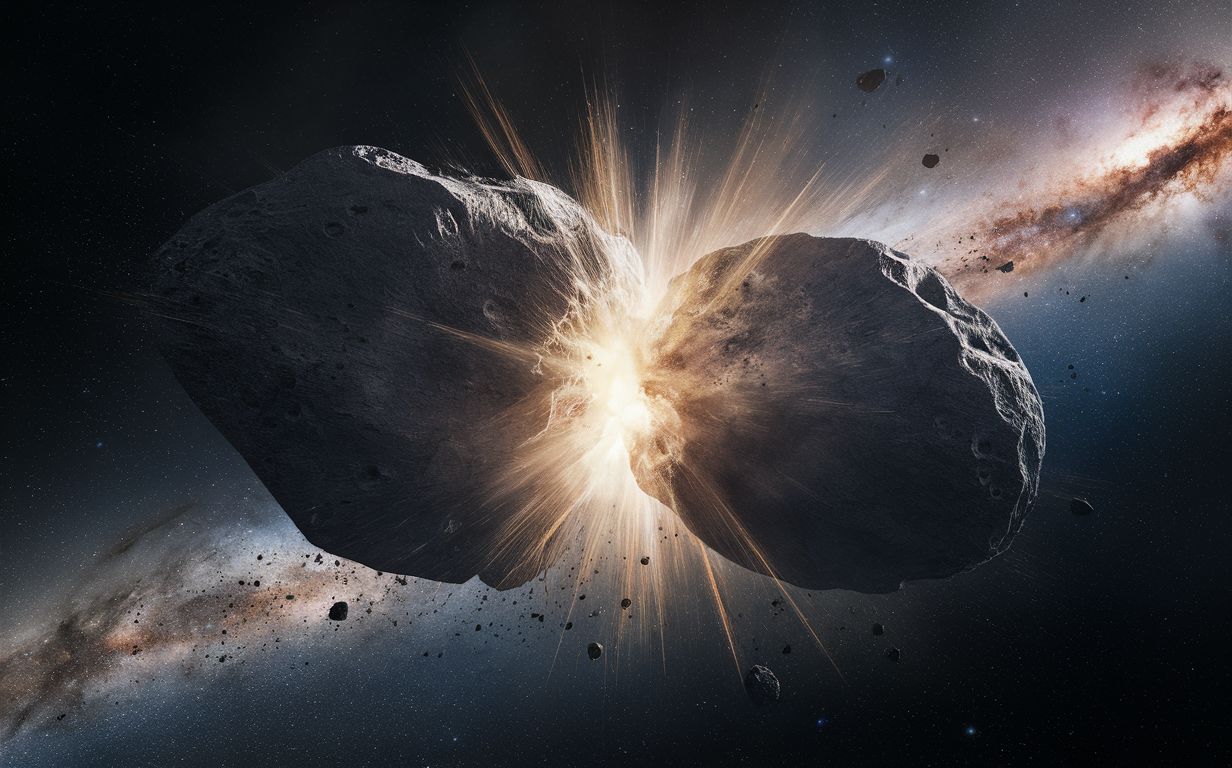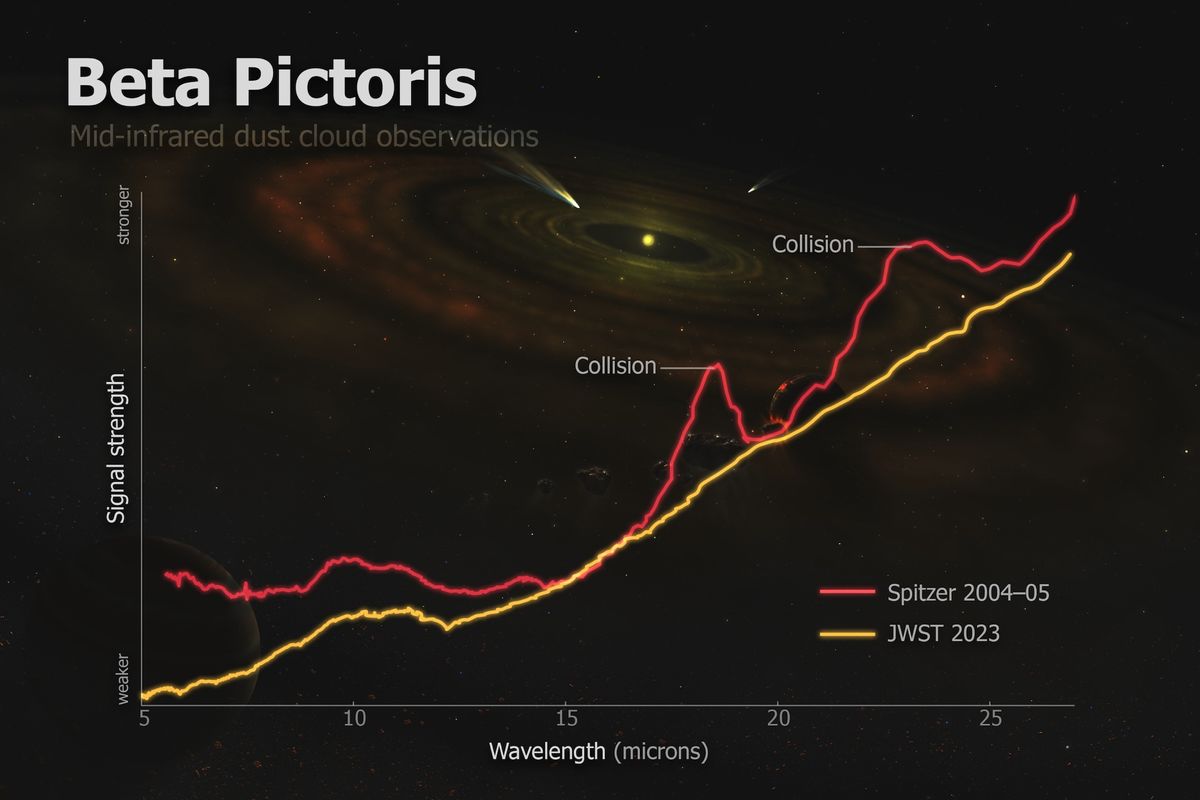Follow us on Google News (click on ☆)

Located 63 light-years away in the constellation of the Painter, Beta Pictoris is a young system aged about 20 million years, compared to the 4.5 billion years of our own Solar System. Discovered in 1983 by NASA's Infrared Astronomical Satellite (IRAS), this system might have been born from the shockwave of a supernova.
Currently, Beta Pictoris hosts at least two giant gas planets, but no rocky planets have been identified there yet. However, researchers believe that rocky planets could be forming thanks to massive collisions generating a lot of dust, like the one recently observed by the JWST. During a presentation on June 10 at the 244th meeting of the American Astronomical Society, scientists shared these discoveries.
The circumstellar debris disk of Beta Pictoris, a vast belt of gas and dust surrounding the star, is still very active, making this system ideal for studying the tumultuous early stages of planet formation. Researchers hope these observations will offer valuable insights into the history of our own Solar System.
Observations have shown that the large dust masses detected by the Spitzer telescope between 2004 and 2005 have completely disappeared. This suggests that a gigantic collision occurred about 20 years ago, reducing asteroids to fine dust comparable to pollen particles or powdered sugar.

Two different space telescopes captured images 20 years apart of the same area around the star called Beta Pictoris. Scientists assume that the significant amount of dust observed in the 2004-2005 image from the Spitzer Space Telescope indicates an asteroid collision. This dust mostly dissipated when the James Webb Space Telescope captured its images in 2023.
Credit: Roberto Molar Candanosa/Johns Hopkins University, with concept art of Beta Pictoris by Lynette Cook/NASA
The Beta Pictoris system
Beta Pictoris is a system with a magnitude 4 star located about 63 light-years from Earth, in the constellation of the Painter. This star is particularly known for its debris disk, the first to be discovered around a star other than our Sun. The debris disk of Beta Pictoris is the result of collisions between asteroids, comets, and other planetesimals, making it an ideal natural laboratory for studying planet formation.
Discovered in 1983 by NASA's Infrared Astronomical Satellite (IRAS), Beta Pictoris has since been extensively studied by various telescopes, including the Hubble Space Telescope and, more recently, the James Webb Space Telescope (JWST). JWST observations have revealed detailed structures in the debris disks, including a new dusty structure resembling a "cat tail" that could be the result of an asteroid collision that occurred about 100 years ago.
Beta Pictoris is a young star, about 20 million years old, much younger than our own Solar System, which is 4.5 billion years old. It hosts at least two giant gas planets, Beta Pictoris b and c, which have been imaged directly. The Beta Pictoris system is often studied to better understand the processes of planet formation, including how rocky planets might form from debris disks.
Recent observations show that the Beta Pictoris debris disk is tilted and that complex structures, such as the "cat tail," have formed due to dynamic interactions within the disk. These discoveries help scientists better understand the dynamics of young star systems and the processes of planet formation.